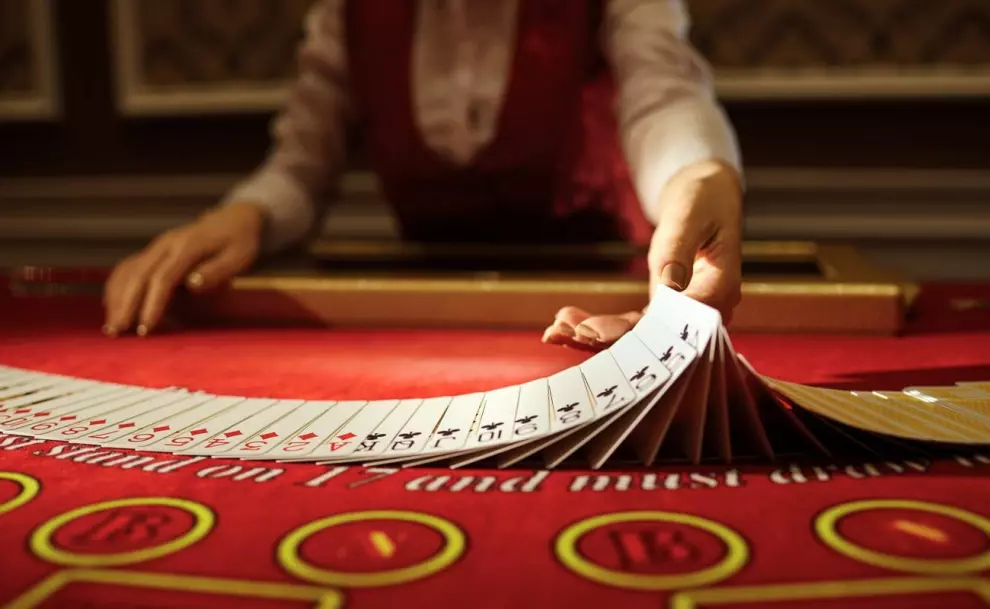Casinos may be quite distracting. They are intended to be.
To ensure the well-being of your money and your mental state, it is crucial to dedicate some effort to selecting the ideal blackjack table.
Three things are what you should look for: a table where you can unwind and enjoy yourself, excellent blackjack rules, and table stakes that match your bankroll.
First, search for the appropriate minimums and maximums.
Table stakes are crucial since you will almost certainly run out of money faster if you play at a table where the minimum bet is too high for your bankroll.
It only takes a few unskilled hands to ruin you.
You can, however, withstand a brief spell of terrible luck if you can afford to place a few more minimum bets.
A bankroll that is at least 20 times, and ideally 40 times, the table minimum is a reasonable general rule of thumb. This implies that for a $5 table, you need bring at least $100, and for a $25 table, $500.
Try to always establish and adhere to loss caps for each game session. Then, when looking for blackjack tables to play at, use those limitations.
Every table has a sign on it that posts the limits. You should be aware that, frequently with little warning, management can and does alter table minimums to accommodate demand.
If your $10 game turns into a $25 game and your bankroll isn’t large enough, be ready to give up.
Lower limit games may be placed up front, occasionally in “fun pits” intended to draw in onlookers, depending on the size of the casino.
Higher limits are frequently located in private rooms off to the side, while more medium limits might be found in the casino’s more calmer places further back.
Ask one of the dealers, floor staff, or even the cocktail servers where you might locate the specific limitations you’re searching for if you’re unsure.
Identify the ideal blackjack conditions in step two.
After locating tables with suitable stakes, you should aim to obtain the best value for your money. To do this, reduce the house advantage as much as possible.
The three main factors you might consider to reduce the house edge in blackjack are the shuffler type being utilized, the amount of decks in play, and the table regulations.
1. Table Guidelines
Despite the strange appearance, a lot of casinos offer various blackjack regulations based on the size of the tables.
You should weigh your requirement for a minimum wager against the best available guidelines.
Two dishonest regulations that are frequently observed at lower limit tables are paying only 6/5 on blackjack instead of 3/2 and even charging a 25-cent charge for each hand that is played.
Keep away from these at all costs.
Inquire with the dealers about any full pay blackjack tables they may have; if they have slightly higher limits, it would be worthwhile to look them up in this specific instance. Or even find out whether there are full pay tables at any local casinos.
The house advantage can increase by up to 300% with those 6/5 tables, and the commission tables can be substantially worse.
Next, you should search for other regulations that, while they may not have as much of an effect on the house advantage, can still have a significant long-term influence.
Ideally, tables that permit: should be found.
- The dealer is on a soft 17.
- Any of the player’s first two cards may be doubled.
- A player who splits can double.
- You can split an ace up to four times.
Over several hours of play, these standard regulations can save you a significant amount of money.
2. The quantity of decks utilized
For the player, using fewer decks is generally preferable.
Eight decks are quite popular, yet there is very little percentage difference between eight and six decks.
However, if you can locate a double-deck game, the player will profit significantly more from it.
When playing with two decks and all the rules mentioned above, the house advantage is around half that of an eight-deck game with the same regulations.
This implies that if you played double deck, you would typically lose only half as much money.
Naturally, the casino is aware of this, which is why double deck games offer reduced house advantages and corresponding minimums.
Once more, you’ll need to choose a game that fits your budget by weighing your bankroll against the house restrictions.
3. Shifflers
Shufflers come in three varieties.
One is where the dealer is still permitted to take their time shuffle cards by the casino. Depending on the dealer and the amount of decks being played, this process may take several minutes, but it provides a pleasant break where you may recover your breath, avoid risking any money, and the casino will still give you a rating for your activity.
Then you’ll notice shuffle machines on other tables. Once you’ve seen them, you can easily notice that these are attached to the table.
At the end of the shoe on these tables, the dealer will insert their old cards into the machine and take out brand-new, shuffled decks of cards right away. The dealer will then resume dealing after that.
It makes sense that the house has a bigger edge the more bets you place in a given hour.
Furthermore, the casino has made the decision that they would rather generate money than deal cards.
You will eventually lose more money playing these games, in addition to having dealers that are tired and dealing inertly, which can make for a worse gaming experience.
A continuous shuffler is another machine that you might notice.
The dealer will recognize them by loading their used cards into the machine right away rather than waiting until the end of the shoe.
In addition to the above mentioned reasons, this is a poor decision because it immediately re-increases the house edge, although only slightly.
